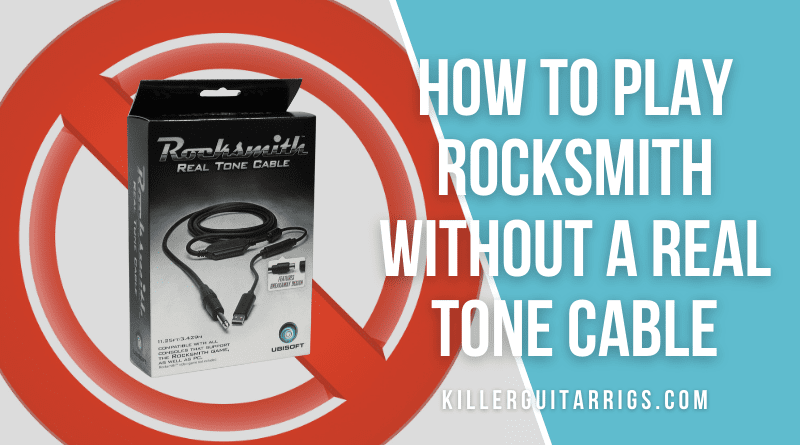Do You Need a Real Tone Cable to Play Rocksmith?
Guitar Hero has undoubtedly inspired tons of people to take up the guitar. Unfortunately, the popular video game isn’t going to make anyone a better player. There is another video game, however, that might just help your guitar skills improve. That game is Rocksmith.
Playing Rocksmith can be a ton of fun for players of all standards, but the technology and the user experience could definitely be better. In this KillerGuitarRigs Review, we’ll look at the controversial Real Tone cables that are required to play Rocksmith, as well as alternatives allowing us to play without a Real Tone Cable.
Contents
What are Real Tone Cables?
Real Tone cables are cables that are “required” to play the Ubisoft Rocksmith 2014 game. For those who haven’t played Rocksmith 2014, you simply use the Real Tone cable to plug your electric or acoustic guitar into Xbox, Playstation, or even PC to play the game. Electric guitars can be plugged straight into the device, while acoustic guitars will require a pickup to plug into the game.
Real Tone cables are quite simple, and they are not much different from a regular guitar cable. While a regular guitar cable has a standard ¼ inch jack for both output and input, a Real Tone Cable has a standard ¼ inch jack on one side and a USB cable on another side.
Why Should You Play Rocksmith Without a Real Tone Cable?
As mentioned above, a Real Tone Cable is a pretty simple device that is just a ¼’’-to-USB cable that serves as the connector between Rocksmith and your guitar. Unfortunately, Real Tone cables can be quite problematic and are known for issues with latency, connectivity, and build quality, not to mention the high prices.
High Price
One of the main issues with the Real Tone Cable is its price. Real Tone Cables cost around $30 or more, and are too expensive for how simple they are. It’s possible to get a better quality cable at a lower price.
Latency Problems
Latency is a delay between your input and the playback of that note through the system. This is a problem that can arise whenever you plug your guitar into a digital device. We know from our own experience that it can be extremely frustrating when what you play and what you hear don’t match.
Latency is a common problem that many Rocksmith users face when using a Real Tone Cable. This might not happen for every single user, but if you’re very sensitive to slight latency when you’re playing Rocksmith, getting an alternate cable is probably a good idea.
Connectivity Issues
When we tested Rocksmith with a Real Tone Cable, sometimes the computer’s USB slot didn’t recognize the device at all. It was a frustrating experience, but since the computer only recognized the cable on certain USB slots, we quickly realized the issue was with the cable and not the computer.
We didn’t face this issue when using XBox, but the Real Tone cable seemed to have some difficulty connecting to Mac and PC. So if you’re planning to use Rocksmith on your Mac or PC, we recommend getting a more reliable guitar-to-USB cable.
Poor Build Quality
Real Tone cables are known to break easily and often break down within 6 months, with heavy users needing to replace theirs even more frequently.
Considering there are better options available that will last longer, it’s not ideal having to spend $30 every couple of months for a Real Tone Cable.
For these reasons, you’re much better off getting a guitar-to-USB cable from a different company with better quality at an even cheaper price.
Ways to Play Rocksmith Without a Real Tone Cable
Using a Guitar-to-USB Cable
The easiest way to play Rocksmith without a Real Tone cable is just to get another guitar-to-USB cable. Real Tone cable is marketed as a unique cable that is irreplaceable, but there are some viable aftermarket solutions.
YESPURE USB Guitar Cable
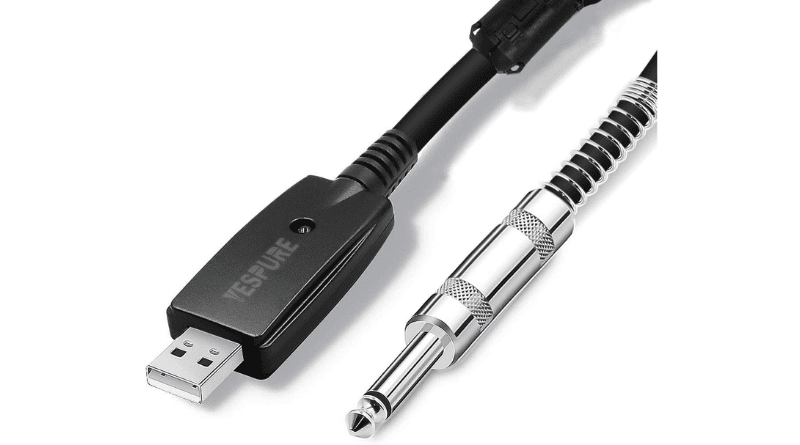
If you want a cheap and reliable guitar-to-USB cable, the YESPURE USB Guitar Cable is a great option and it typically retails below $15.
The most obvious downside to this option is that it isn’t plug and play. Fortunately, all you need to do to get up and running is download “Nocablelauncher” (in order to use this cable with Rocksmith). It works well with a Mac or a PC, and it’ll be a great replacement for your Real Tone cable.
Roland RCC-10-US14 Black Series
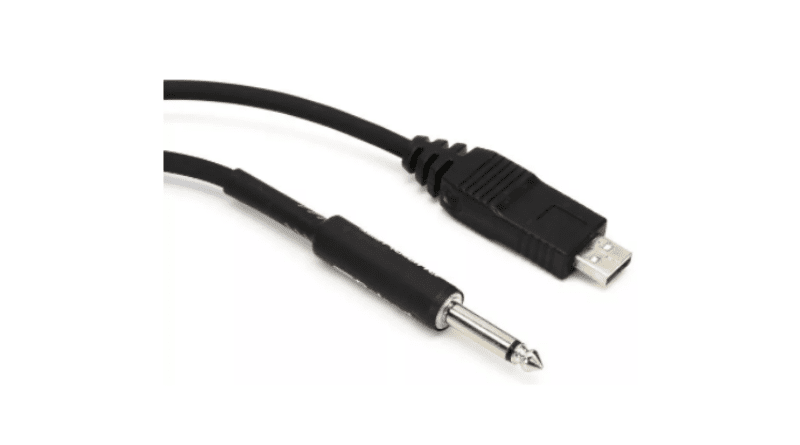
If you want a high-quality guitar-to-USB cable that will last you for a long time, the Roland RCC-10-US14 Black Series is a fantastic option. It’s one of the best made options on the market and works well with Rocksmith. It’s a bit more expensive than a Real Tone, but it won’t need frequent replacements.
Behringer Guitar2USB cable
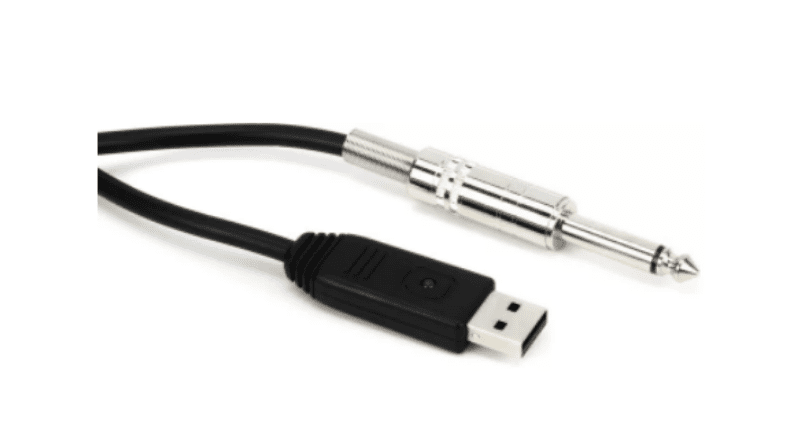
The Behringer Guitar2USB cable is another excellent high quality cord for connecting your guitar to Rocksmith. It’s not quite as well made as the Roland, but we still found it to be superior to the Real Tone, and it costs less.
Audio Interface
Using an audio interface to play Rocksmith is another great way to replace your Real Tone cable. Additionally, an audio interface has the benefit of being able to be used for its primary purpose, which is recording.
To use an audio interface for playing Rocksmith, you’ll have to switch the game to Microphone Mode on your computer.
Note: this method will only work for PC or Mac, and getting an audio interface will cost you a minimum of around $100. The most popular options for cheap audio interfaces are the Focusrite Scarlett 2i2 3rd Gen USB Audio Interface and the IK Multimedia iRig HD 2.
Focusrite Scarlett 2i2 3rd Gen USB Audio Interface

IK Multimedia iRig HD 2
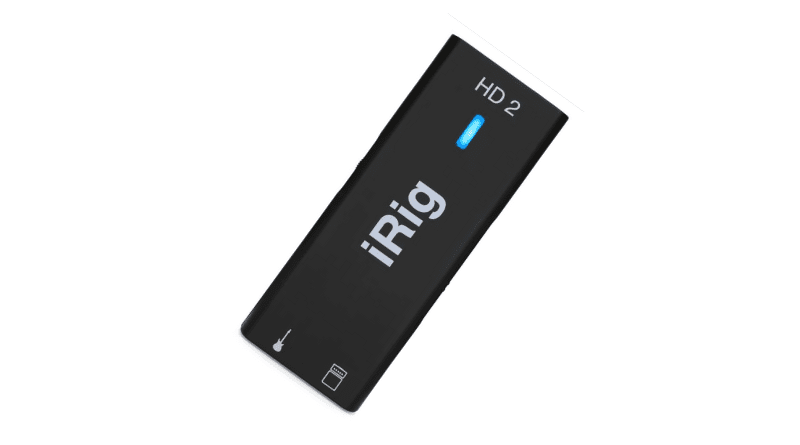
Acoustic Guitar with a Microphone
Another easy way to play without a Real Tone cable is to use an acoustic guitar in Microphone Mode in Rocksmith.
This method will only work if you’re an acoustic guitar player and don’t need to play electric guitar. Microphone Mode in Rocksmith allows you to use an external microphone to play. This is a great way for acoustic guitarists to practice without a Real Tone cable.
For this method, we recommend you get a USB microphone like Blue Yeti USB Microphone, or the SHURE MV5.
Blue Yeti USB Microphone
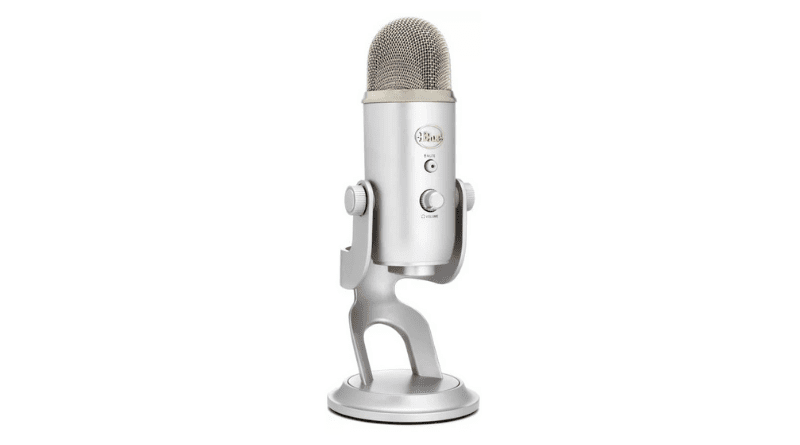
SHURE MV5
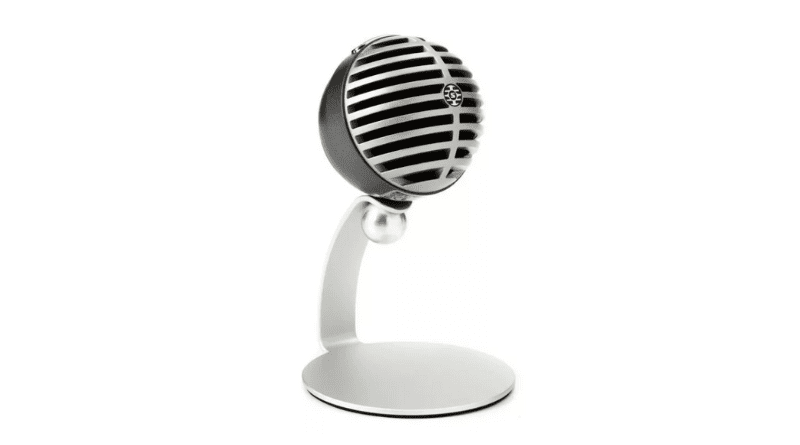
Playing in Disconnected Mode
Finally, the simplest method of all is to just play in Disconnected Mode. When you use Disconnected Mode, the game won’t be able to detect your playing and match it with the screen. Instead, you’re just following the screen and playing along with your guitar.
If you’re someone who just wants to use Rocksmith as a way to practice guitar instead of playing it as a game, Disconnected Mode is a simple way without a Real Tone Cable. For the full game experience, this method is not recommended.
Final Thoughts on Real Tone Cables and Their Alternatives
Real Tone cables are often overpriced and their latency, connectivity issues, and poor build quality tend to cause more frustration than you’re likely to want to deal with.
Purchasing an alternative guitar-to-USB cable online is the easiest way to replace a Real Tone cable and find a long-lasting and reliable solution. Using an audio interface, playing acoustically with the Microphone Mode, or playing in Disconnected Mode are other easy ways to play the game without needing a Real Tone Cable.

